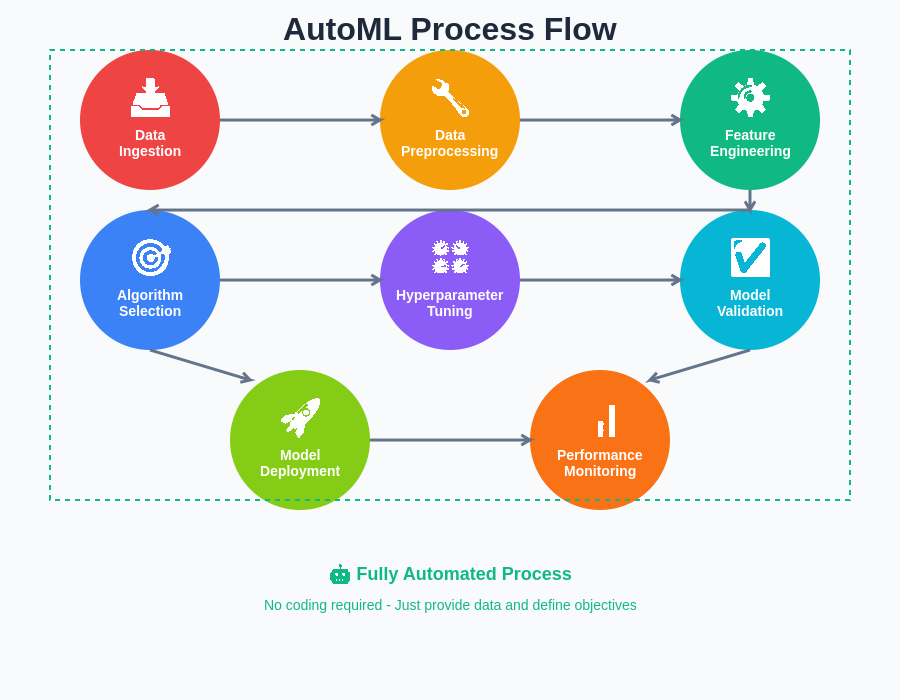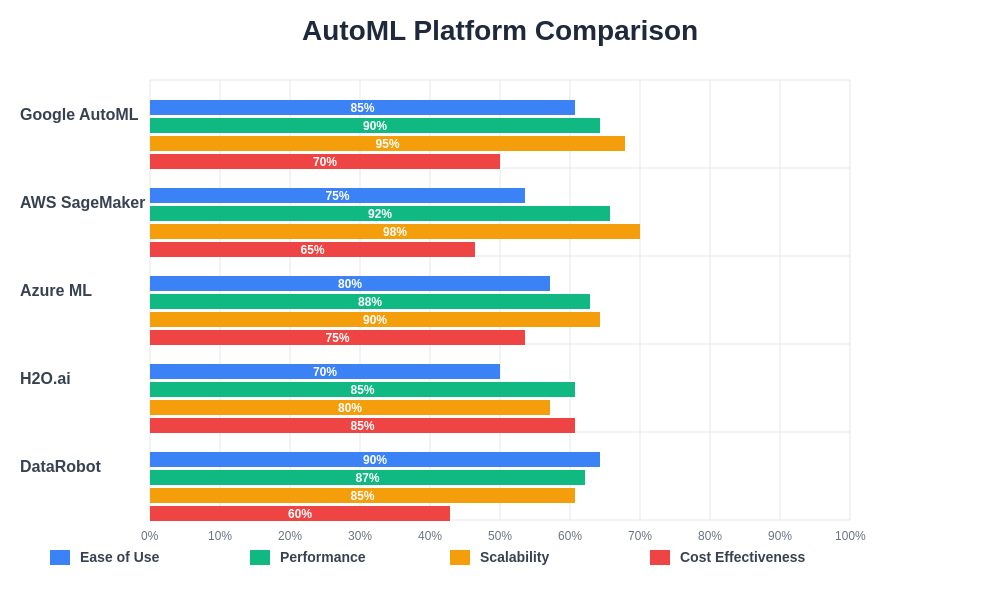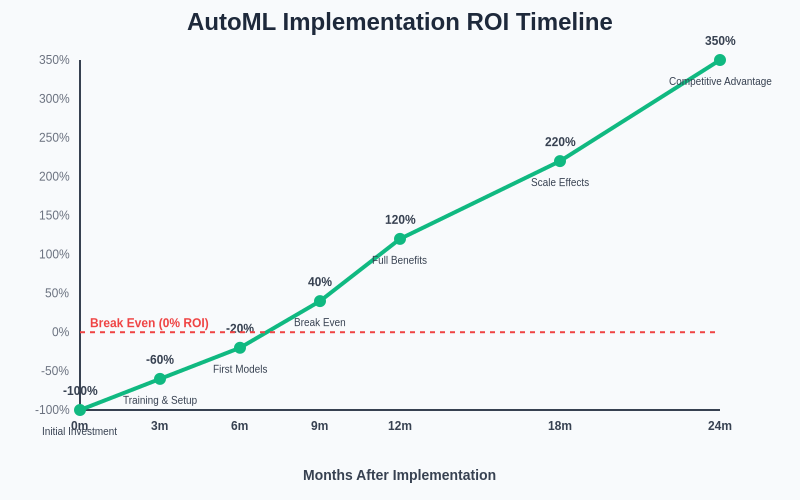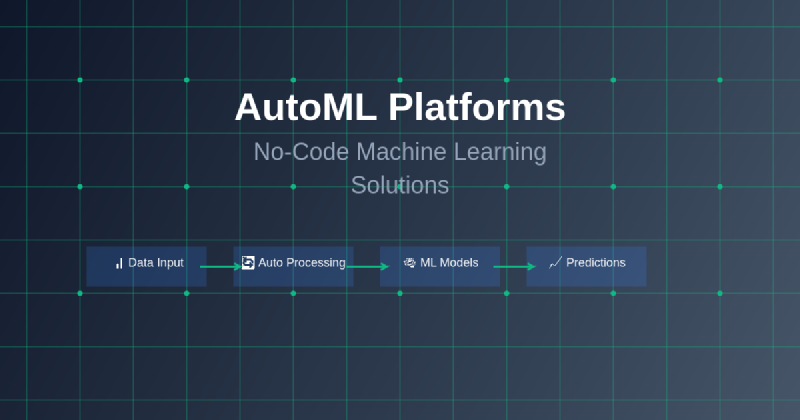The democratization of machine learning has reached unprecedented heights with the emergence of AutoML platforms, fundamentally transforming how businesses and individuals approach artificial intelligence implementation. These revolutionary no-code solutions have dismantled traditional barriers that once required extensive programming knowledge and deep statistical expertise, making sophisticated machine learning capabilities accessible to domain experts, business analysts, and organizations of all sizes regardless of their technical background.
Explore the latest AI developments and trends to understand how AutoML platforms are reshaping the landscape of artificial intelligence and making advanced analytics accessible to everyone. The transformation brought about by these platforms represents more than technological advancement; it signifies a fundamental shift toward inclusive AI development where subject matter expertise becomes as valuable as technical proficiency in creating effective machine learning solutions.
The Evolution of Machine Learning Accessibility
Traditional machine learning development has historically been the exclusive domain of highly skilled data scientists and machine learning engineers who possessed deep understanding of statistical methods, programming languages like Python and R, and complex mathematical concepts underlying various algorithms. This technical barrier created a significant gap between organizations that could afford specialized talent and those that remained unable to leverage the transformative power of artificial intelligence for their business operations.
AutoML platforms have emerged as the great equalizer in this landscape, providing intuitive interfaces and automated processes that handle the complex technical aspects of model development while allowing users to focus on domain expertise and business logic. These platforms automatically manage feature engineering, algorithm selection, hyperparameter optimization, and model validation, transforming what once required months of specialized work into processes that can be completed in hours or days by non-technical professionals.
The evolution from code-heavy machine learning frameworks to drag-and-drop interfaces has opened unprecedented opportunities for innovation across industries. Marketing professionals can now build customer segmentation models, financial analysts can create fraud detection systems, and healthcare administrators can develop predictive analytics solutions without requiring extensive technical teams or years of specialized training.
Understanding AutoML Platform Architecture
Modern AutoML platforms operate through sophisticated automated pipelines that intelligently handle the entire machine learning workflow from data preprocessing through model deployment. These systems employ advanced algorithms to automatically clean and prepare data, identify relevant features, select appropriate machine learning algorithms, and optimize model performance through systematic hyperparameter tuning processes.
The underlying architecture of these platforms typically includes automated data quality assessment tools that identify missing values, outliers, and inconsistencies while suggesting appropriate remediation strategies. Feature engineering capabilities automatically generate new variables, transform existing data types, and create meaningful representations that enhance model performance without requiring manual intervention from users.
Algorithm selection mechanisms within AutoML platforms evaluate multiple machine learning approaches simultaneously, comparing performance metrics across different model types to identify the most suitable solution for specific datasets and problem types. This automated comparison process often surpasses manual model selection by considering combinations and configurations that human practitioners might overlook due to time constraints or cognitive limitations.

The comprehensive AutoML workflow demonstrates how multiple complex processes are seamlessly orchestrated without requiring technical expertise from users. Each stage in this automated pipeline represents sophisticated machine learning operations that traditionally required specialized knowledge and extensive manual configuration.
Leverage advanced AI capabilities with Claude to enhance your understanding of AutoML concepts and receive personalized guidance on implementing no-code machine learning solutions for your specific use cases. The integration of conversational AI with AutoML platforms creates powerful synergies that accelerate learning and implementation processes.
Leading AutoML Platform Categories
The AutoML ecosystem encompasses diverse platform categories designed to address different user needs, technical requirements, and organizational contexts. Cloud-based AutoML services provided by major technology companies offer scalable, enterprise-grade solutions with extensive integration capabilities and robust security features that meet demanding organizational requirements.
Enterprise-focused platforms prioritize governance, compliance, and integration with existing business systems while providing comprehensive audit trails and explainability features that satisfy regulatory requirements. These solutions typically offer advanced collaboration tools, role-based access controls, and sophisticated deployment options that enable seamless integration with production environments.
Specialized domain-specific AutoML platforms have emerged to address particular industry needs, offering pre-built models, domain-specific feature engineering capabilities, and specialized evaluation metrics tailored to specific use cases such as computer vision, natural language processing, or time series forecasting. These platforms provide optimized workflows that accelerate development timelines for common industry applications.
Open-source AutoML frameworks provide flexibility and customization options for organizations with specific technical requirements or those seeking to maintain complete control over their machine learning infrastructure. These platforms often serve as foundations for custom AutoML solutions while providing transparency and extensibility that commercial platforms may not offer.
Transforming Business Analytics and Decision Making
AutoML platforms have fundamentally transformed how organizations approach data-driven decision making by enabling rapid experimentation, hypothesis testing, and insight generation across diverse business functions. Marketing teams can now quickly develop customer lifetime value models, churn prediction systems, and personalization engines that drive targeted campaigns and improve customer engagement metrics.
Financial services organizations leverage AutoML platforms to create sophisticated risk assessment models, fraud detection systems, and algorithmic trading strategies that would previously have required extensive data science teams and months of development effort. The ability to rapidly prototype and deploy these models has accelerated innovation cycles and improved competitive positioning in fast-moving markets.
Supply chain optimization has been revolutionized through AutoML applications that predict demand fluctuations, optimize inventory levels, and identify potential disruptions before they impact operations. These automated insights enable more responsive and efficient supply chain management while reducing costs and improving customer satisfaction.
Healthcare organizations utilize AutoML platforms to develop predictive models for patient outcomes, optimize resource allocation, and identify potential health risks across patient populations. The accessibility of these tools has enabled healthcare professionals to directly contribute their domain expertise to model development rather than relying exclusively on technical intermediaries.
Addressing Common AutoML Implementation Challenges
Despite their transformative potential, AutoML platforms present unique challenges that organizations must navigate to achieve successful implementations. Data quality remains a critical factor that significantly impacts model performance, requiring careful attention to data collection processes, validation procedures, and ongoing monitoring systems that ensure consistent model accuracy over time.
Model interpretability represents another significant consideration, particularly in regulated industries where decision transparency is required for compliance purposes. Many AutoML platforms now incorporate advanced explainability features that provide insights into model behavior, feature importance, and decision rationales that satisfy both technical and regulatory requirements.
Integration with existing business systems often requires careful planning and technical coordination to ensure seamless data flows, appropriate security controls, and effective change management processes. Organizations must consider how AutoML-generated insights will be incorporated into existing decision-making workflows and what training may be required for end users.
Governance and oversight become increasingly important as AutoML democratizes model development across organizations. Establishing appropriate review processes, quality assurance procedures, and performance monitoring systems ensures that automated model development maintains appropriate standards while enabling innovation and experimentation.
Enhance your research capabilities with Perplexity to stay current with emerging AutoML trends, platform comparisons, and implementation best practices that can inform your technology selection and deployment strategies.
Industry-Specific AutoML Applications
Different industries have embraced AutoML platforms in unique ways that leverage their specific domain knowledge and address particular business challenges. Retail organizations utilize these platforms to optimize pricing strategies, forecast demand patterns, and personalize customer experiences through sophisticated recommendation systems that adapt to changing consumer behaviors and market conditions.
Manufacturing companies leverage AutoML for predictive maintenance applications that identify equipment failures before they occur, optimize production schedules based on demand forecasts, and improve quality control through automated defect detection systems. These applications have resulted in significant cost savings and operational efficiency improvements across manufacturing operations.
Financial institutions have been early adopters of AutoML technology, using these platforms to enhance credit scoring models, detect fraudulent transactions, and optimize investment portfolios through automated trading strategies. The ability to rapidly adapt models to changing market conditions has provided competitive advantages in dynamic financial markets.
Educational institutions employ AutoML platforms to improve student outcomes through predictive analytics that identify at-risk students, optimize resource allocation, and personalize learning experiences based on individual student needs and learning patterns. These applications have demonstrated measurable improvements in graduation rates and student satisfaction metrics.
Advanced Features and Capabilities
Modern AutoML platforms incorporate increasingly sophisticated features that extend beyond basic model development to encompass comprehensive machine learning lifecycle management. Automated feature engineering capabilities can identify complex patterns and relationships within data that might not be apparent through manual analysis, creating new variables that significantly improve model performance.
Ensemble learning techniques automatically combine multiple models to create more robust and accurate predictions than any individual model could provide. These automated ensemble methods often discover optimal combinations that surpass human-designed model architectures while requiring no additional technical expertise from users.
Real-time model monitoring and retraining capabilities ensure that deployed models maintain accuracy as underlying data distributions change over time. These automated systems can detect model drift, performance degradation, and data quality issues while automatically triggering retraining processes that maintain optimal performance without manual intervention.
Advanced visualization and reporting features provide comprehensive insights into model behavior, performance metrics, and business impact measurements that enable effective communication with stakeholders and support data-driven decision making across organizational levels.
Comparing AutoML Platforms and Selection Criteria
Selecting appropriate AutoML platforms requires careful evaluation of multiple factors including ease of use, scalability requirements, integration capabilities, and specific feature needs that align with organizational objectives. User interface design and learning curve considerations significantly impact adoption success, particularly for organizations with limited technical expertise.
Performance benchmarks and model accuracy capabilities vary significantly across platforms, with some excelling in specific domains such as computer vision or natural language processing while others provide more generalized capabilities across diverse problem types. Understanding these strengths and limitations helps inform selection decisions based on specific use case requirements.
Cost structures and pricing models differ substantially between platforms, ranging from usage-based pricing for cloud services to enterprise licensing for on-premises solutions. Total cost of ownership calculations should consider not only platform licensing but also training, support, and integration costs that may be required for successful implementation.

Leading AutoML platforms demonstrate varying strengths across critical evaluation dimensions, with each platform optimizing for different organizational priorities and use case requirements. Understanding these performance characteristics enables informed decision-making based on specific organizational needs and constraints.
Security, compliance, and governance features become increasingly important for enterprise deployments, requiring careful evaluation of data protection capabilities, audit trail functionality, and regulatory compliance support that may be required for specific industries or geographic regions.
Future Trends and Technological Developments
The AutoML landscape continues evolving rapidly with emerging technologies that promise to further democratize machine learning capabilities while improving model performance and reducing implementation complexity. Advanced neural architecture search techniques are being integrated into AutoML platforms, enabling automatic design of sophisticated deep learning models that previously required extensive expertise to develop.
Federated learning capabilities are being incorporated into AutoML platforms, enabling collaborative model development across distributed datasets while maintaining privacy and security requirements. These capabilities open new possibilities for cross-organizational collaboration and model improvement without compromising sensitive data.
Natural language interfaces are emerging that allow users to describe their machine learning objectives in plain English, with the platform automatically translating these descriptions into appropriate model architectures and training procedures. This development represents the next step in making machine learning accessible to non-technical users.
Integration with edge computing and Internet of Things ecosystems is expanding AutoML capabilities beyond cloud-based analytics to real-time decision making at the point of data collection. These developments enable new applications in manufacturing, healthcare, and consumer electronics that require immediate responses to changing conditions.
Best Practices for AutoML Implementation
Successful AutoML implementation requires strategic planning that begins with clear definition of business objectives and success metrics that will guide platform selection and project prioritization. Organizations should start with well-defined pilot projects that demonstrate value while building internal expertise and confidence in AutoML capabilities.
Data preparation and quality assurance remain critical success factors that require ongoing attention and investment. Establishing robust data governance processes, quality monitoring systems, and validation procedures ensures that AutoML models receive high-quality inputs that enable accurate and reliable predictions.
Change management and user training programs play crucial roles in successful AutoML adoption, requiring structured approaches that help stakeholders understand new capabilities while addressing concerns about automation and job displacement. Effective communication about AutoML benefits and limitations helps build organizational support for implementation initiatives.
Continuous monitoring and evaluation processes ensure that AutoML implementations continue delivering expected value while identifying opportunities for expansion and improvement. Regular performance reviews, user feedback collection, and success metric tracking provide insights that guide ongoing optimization efforts.
Measuring ROI and Business Impact
Quantifying the return on investment from AutoML implementations requires comprehensive measurement frameworks that capture both direct cost savings and indirect benefits such as improved decision making speed and enhanced analytical capabilities. Organizations should establish baseline measurements before implementation to enable accurate impact assessment.
Time-to-insight improvements represent significant value propositions for AutoML platforms, enabling organizations to respond more quickly to market changes and competitive threats. Measuring reductions in project timelines and increases in analytical output provides concrete evidence of AutoML value.
Quality improvements in decision making through more accurate predictions and better risk assessment contribute to long-term organizational success that may be difficult to quantify immediately but provides substantial cumulative benefits over time. Tracking decision accuracy and outcome improvements helps demonstrate these longer-term value contributions.
Cost reduction through decreased reliance on specialized technical resources and faster project completion enables organizations to reallocate resources toward higher-value activities while expanding their analytical capabilities. Comprehensive cost-benefit analyses should consider both direct cost savings and opportunity costs of alternative approaches.

The return on investment trajectory for AutoML implementations typically follows a predictable pattern, with initial investment costs gradually offset by operational efficiencies and enhanced analytical capabilities. Organizations can expect to achieve break-even within 6-9 months, with substantial positive returns emerging as AutoML capabilities scale across multiple business functions.
The future of machine learning lies not in replacing human expertise but in augmenting human capabilities through intelligent automation that handles technical complexity while preserving the creativity, domain knowledge, and strategic thinking that humans bring to problem-solving processes. AutoML platforms represent a significant step toward this collaborative future where technology amplifies human potential rather than replacing it.
Disclaimer
This article is for informational purposes only and does not constitute professional advice. The views expressed are based on current understanding of AutoML technologies and their applications across various industries. Readers should conduct their own research and consider their specific requirements when evaluating and implementing AutoML platforms. The effectiveness and suitability of different platforms may vary depending on specific use cases, data characteristics, and organizational needs.
